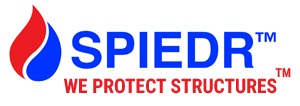When conditions are safe, having a fire can be a wonderful activity. Be responsible and follow these safe burning practices every time.
Starting a Fire
Make sure that you know the fire restrictions in your area and use your common sense. Do not start a fire in an extremely dry area with a lot of fuel nearby.
Use crumpled newspaper to start your fire, never glossy paper (such as magazine pages). Use dry wood as your fuel and do not use fuel that is green, wet, painted, or pressure treated. Avoid driftwood because the salt on it can lead to the formation of toxic compounds as it burns. It is illegal to burn waste, such as garbage or plastic, in British Columbia.
Maintaining a Fire
Always stay near your fire, never leave it unattended. Keep a water source like a hose nearby if possible so that you can quickly extinguish the fire if it were to get out of control. Stack wood loosely as you add it to the fire so that there are enough air pockets so that the fire will burn properly and not smother.
Putting a Fire Out
When it is time to leave your fire, whether you are vacating your campsite or going to sleep for the night, it is crucial to make sure that your fire is completely out. Let it burn down to coals and douse it thoroughly with water. Even if your fire appears to have gone out on its own, be sure to douse it with water because there could be embers that are still hot enough to spark a fire if they make contact with flammable fuel.
Doing your part to prevent wildfire is more important now than ever before. In addition to safe burning practices, controlled burns are an essential technique for reducing wildfire risks. SPIEDR provides wildland fire training services, consulting, and equipment rentals to help keep wildfires under control and protect residences and businesses threatened by fire.


